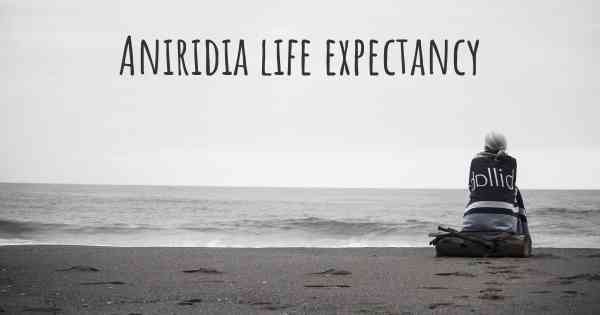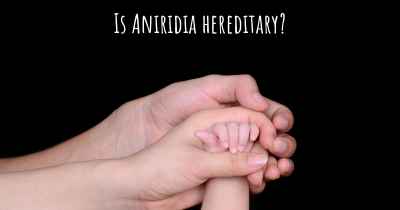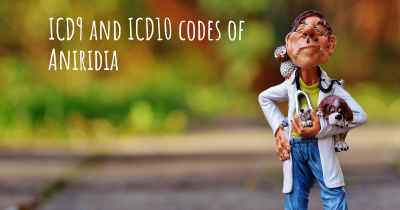What is the life expectancy of someone with Aniridia?
Life expectancy of people with Aniridia and recent progresses and researches in Aniridia

Aniridia is a rare genetic disorder characterized by the partial or complete absence of the iris, the colored part of the eye. The life expectancy of individuals with Aniridia can vary depending on various factors such as the severity of associated complications and the presence of other health conditions. While it is challenging to provide an exact life expectancy, it is important to note that early diagnosis, regular eye care, and appropriate management can significantly improve the quality of life for individuals with Aniridia. It is crucial for individuals with Aniridia to work closely with healthcare professionals to address any potential complications and receive necessary support.
Aniridia is a rare genetic disorder characterized by the partial or complete absence of the iris, the colored part of the eye. It is a congenital condition, meaning it is present from birth, and affects both eyes. Aniridia can lead to various visual impairments and is often associated with other eye abnormalities, such as cataracts, glaucoma, and corneal problems.
Given the complexity and variability of Aniridia, it is challenging to provide a definitive answer regarding life expectancy for individuals with this condition. The life expectancy of someone with Aniridia can vary significantly depending on several factors, including the severity of the disorder, associated complications, and access to appropriate medical care.
Severity of Aniridia: Aniridia can range from mild to severe, with some individuals having a partial iris and others having a complete absence of the iris. The severity of the condition can impact visual acuity and the overall prognosis. Those with more severe forms of Aniridia may experience more significant visual impairments and potentially face additional health challenges.
Associated Complications: Aniridia is often accompanied by other eye abnormalities, such as cataracts, glaucoma, and corneal problems. These complications can further impact vision and overall health. Cataracts, for example, can cause clouding of the lens, leading to decreased visual acuity if left untreated. Glaucoma, a condition characterized by increased pressure within the eye, can result in optic nerve damage and vision loss. Corneal problems, including thinning or scarring, can also affect visual function. The presence and management of these associated complications can influence life expectancy.
Medical Care and Management: Access to appropriate medical care and management strategies can significantly impact the prognosis and life expectancy of individuals with Aniridia. Regular eye examinations, early detection, and intervention for associated complications are crucial in preserving vision and preventing further deterioration. Treatment options may include corrective lenses, surgical interventions, medications, and vision rehabilitation programs. The availability and utilization of these resources can vary depending on factors such as geographical location, socioeconomic status, and healthcare systems.
It is important to note that Aniridia is a rare condition, affecting an estimated 1 in 50,000 to 100,000 individuals. Due to its rarity and the limited number of long-term studies specifically focused on life expectancy in Aniridia, there is a lack of comprehensive data on this topic.
However, it is essential to approach the question of life expectancy with a broader perspective. Aniridia is a lifelong condition that requires ongoing management and support. While the disorder itself may not directly impact life expectancy, associated complications and the potential for vision loss can affect an individual's quality of life and overall health outcomes.
Conclusion: In summary, the life expectancy of someone with Aniridia is difficult to determine precisely due to the variability of the condition and the limited available data. The severity of Aniridia, associated complications, and access to appropriate medical care and management strategies all play significant roles in determining the prognosis and overall health outcomes for individuals with this condition. It is crucial for individuals with Aniridia to work closely with healthcare professionals specializing in ophthalmology and genetic counseling to receive appropriate care and support throughout their lives.
Posted Mar 5, 2017 by James 1205
Posted Mar 23, 2017 by KATHERINE HASLAM 1000
Posted Jun 3, 2019 by Mad-Eye Louie 1260
Like other people in any dangerous situation
Posted Jun 17, 2017 by Antonia 2501
Posted Sep 16, 2017 by Loana 1701
Posted Sep 17, 2017 by Adriana Adelina 104








